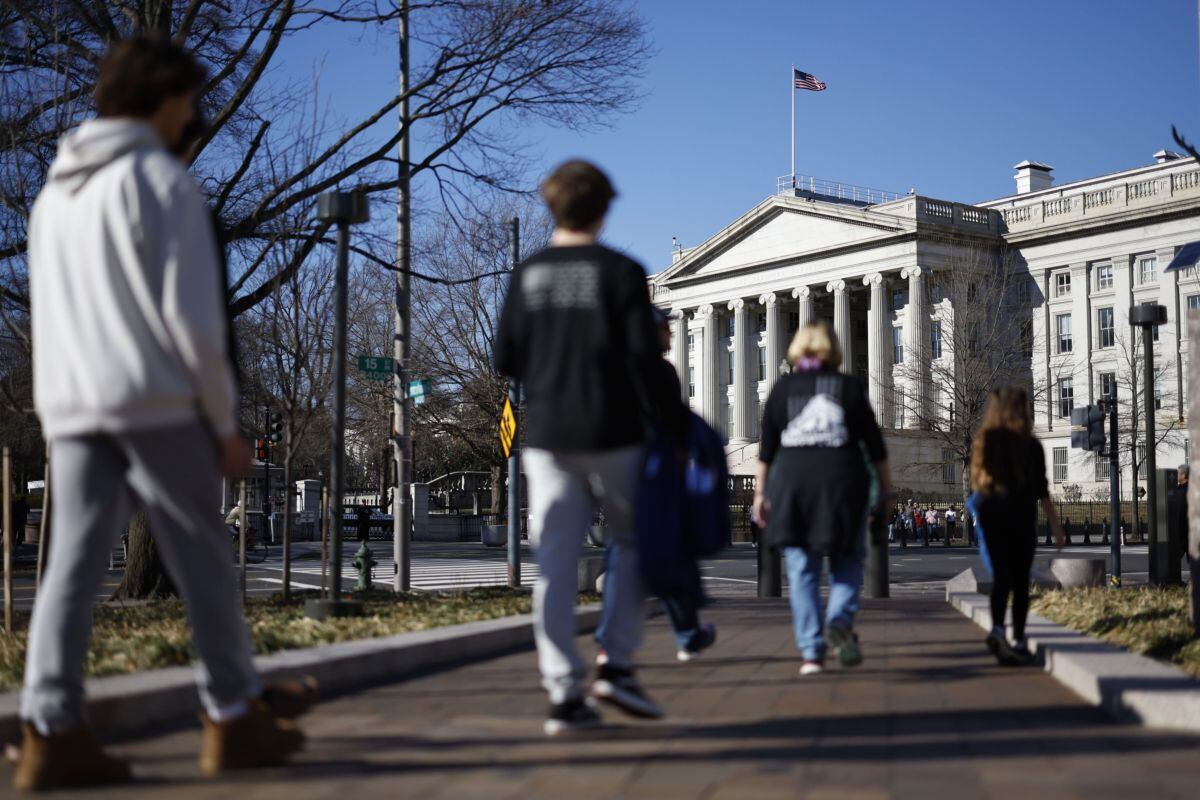
U.S. consumer prices were unchanged in October amid a decline in gasoline prices, and the annual rise in core inflation was the smallest in two years, supporting the view that the Fed Federal is probably done raising interest rates.
Although rents continued to rise last month, the pace of the increase slowed considerably compared to September. Lower-than-expected inflation readings reported by the Labor Department’s Bureau of Labor Statistics (BLS) on Tuesday pushed down Treasury yields and sparked a stock market rally.
Combined with data this month that showed job and wage growth cooled in October, the data reinforced expectations that the economy could avoid a feared recession.
“The Fed always wants to see more progress, but it seems the battle against inflation has come to an end”said Christopher Rupkey, chief economist at FWDBONDS. “With any luck, the economy will avoid a recession and also get lower inflation”.
The unchanged consumer price index reading, the first in more than a year, followed a 0.4% rise in September.
Gasoline prices fell 5.0%, offsetting the continued rise in the cost of renting accommodation. Prices at the pump rose 2.1% in September.
Food stocks gained 0.3% after rising 0.2% in each of the previous three months. Grocery food prices rose 0.3%, driven by higher costs of meat, fish and eggs. Cereals and baked goods also cost more, while prices for fruits and vegetables remained unchanged.
In the 12 months to October, the CPI rose 3.2%, after increasing 3.7% in September.
Economists consulted by Reuters had predicted that the CPI would gain 0.1% in the month and 3.3% in year-on-year terms.
Although year-on-year consumer prices are down from the peak of 9.1% reached in June 2022, the disinflationary trend has stalled somewhat against the backdrop of a strong economy driven by a relatively tight labor market. Inflation is above the 2% target established by the Federal Reserve.
Most economists believe the U.S. central bank’s fastest monetary policy tightening campaign since the 1980s is over, a narrative that Fed Chair Jerome Powell and other policymakers have rejected. Powell said last week that “if it becomes appropriate to tighten monetary policy further, we will not hesitate to do so.”
Financial markets even anticipate a rate cut next May, according to the CME Group’s FedWatch tool. Since March 2022, the Fed has raised its official interest rate by 525 basis points, to the current range of 5.25%-5.50%.
Treasury bond prices soared and the interest rate-sensitive two-year yield hit a two-week low. The dollar fell against a basket of currencies. Stocks on Wall Street rose sharply.
“Whether or not the economy can stay out of recession remains to be seen, but the stock market should continue to rise as people begin to accept that higher rates are off the table, which should boost asset prices. stocks…and bond yields down,” said Chris Zaccarelli, chief investment officer at Independent Advisor Alliance in Charlotte, North Carolina.
Excluding the volatile food and energy components, the CPI rose 0.2%, amid higher home rental costs. The so-called core CPI had been rising 0.3% for two months. The core CPI rose 4.0% year-on-year in October, after increasing 4.1% in September.
With the October release, the BLS made changes to the methodology it uses to calculate health insurance prices, sending costs skyrocketing.
Source: Gestion
Ricardo is a renowned author and journalist, known for his exceptional writing on top-news stories. He currently works as a writer at the 247 News Agency, where he is known for his ability to deliver breaking news and insightful analysis on the most pressing issues of the day.











